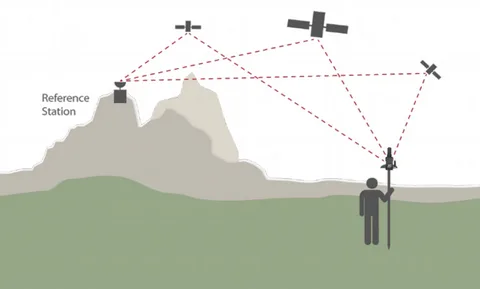As technology advances, the demand for precise and reliable positioning systems has never been higher. Whether you’re working in surveying, construction, agriculture, or autonomous vehicles, selecting the right Real-Time Kinematic (RTK) GPS receiver can make or break the success of your project. In this article, we’ll explore key factors to consider when choosing the best rtk gps receiver for your project in 2025, ensuring you make an informed decision that suits your needs.
Understanding RTK GPS Technology
RTK GPS receivers utilize satellite signals combined with correction data to achieve centimeter-level accuracy in positioning. This makes them essential tools for applications requiring precise location data in real-time. With the emergence of new satellite constellations like Galileo and BeiDou, 2025 brings improved performance and coverage for RTK devices.
Factors to Consider When Choosing the Best RTK GPS Receiver for Your Project in 2025
1. Accuracy and Reliability
The primary reason to invest in an RTK GPS receiver is precision. Look for models that offer consistent centimeter-level accuracy under various environmental conditions. Reliability in signal acquisition and maintaining correction data during operation is also crucial to avoid costly downtime.
2. Compatibility and Connectivity
In 2025, many RTK receivers offer multi-constellation support and can connect seamlessly to drones, surveying equipment, and GIS systems. Ensure that the receiver you choose supports the necessary communication protocols such as Bluetooth, UHF radio, or cellular networks for seamless data transfer.
3. Battery Life and Durability
Projects often require fieldwork in remote or harsh environments. Prioritize receivers with long-lasting batteries and rugged designs that can withstand extreme weather, dust, and shocks to ensure uninterrupted operation.
4. Ease of Use and Software Integration
A user-friendly interface and compatibility with widely used mapping and surveying software can streamline your workflow. Look for devices that come with intuitive apps and support cloud data synchronization to maximize productivity.
Top Trends in RTK GPS Receivers for 2025
The industry is moving toward more compact and lightweight receivers without compromising accuracy. Integration of AI for real-time data correction and enhanced error detection is becoming more common, making choosing the best RTK GPS receiver for your project in 2025 a more technology-driven decision.
Conclusion
Selecting the right RTK GPS receiver involves balancing accuracy, connectivity, durability, and ease of use. By understanding your project’s specific requirements and staying updated with technological trends, you can confidently choose the best RTK GPS receiver for your project in 2025. Investing wisely today will ensure precision and efficiency in your operations tomorrow.


